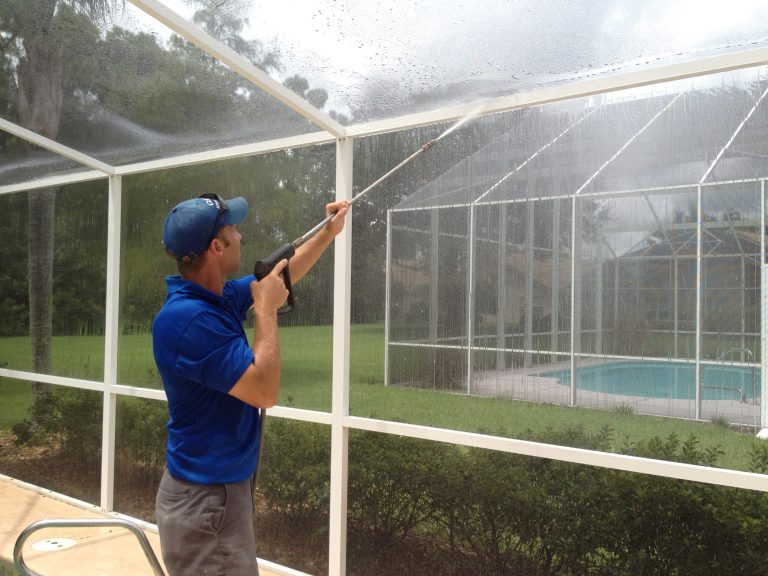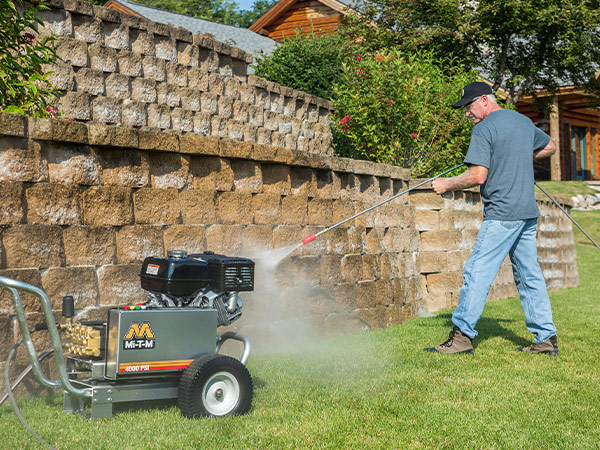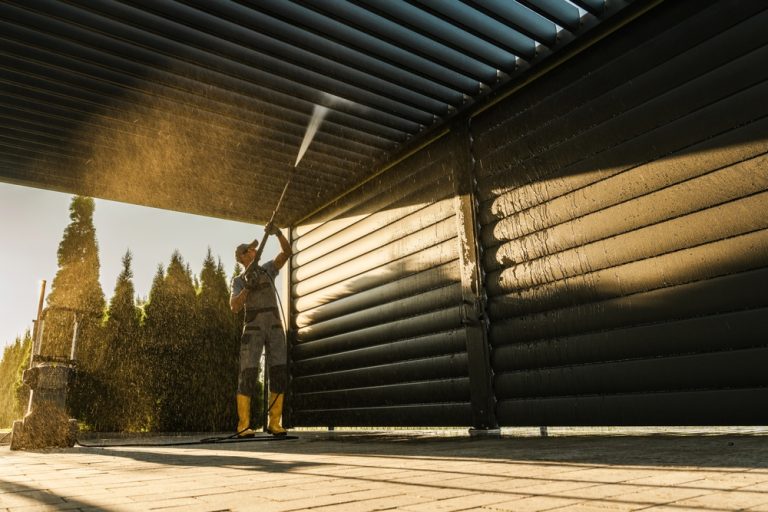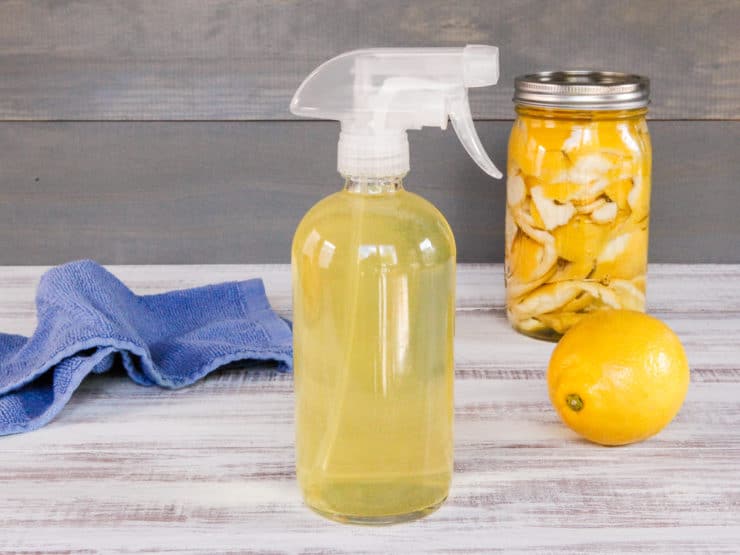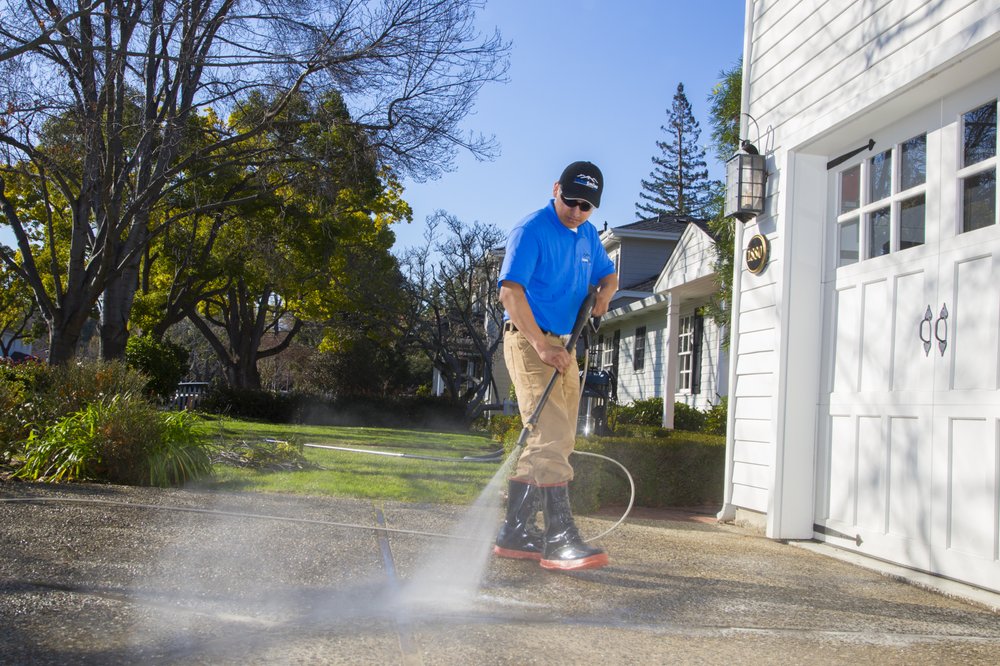
If your driveway has turned from light gray to blotchy black with dirt, oil, and algae, you’re not alone. Driveways take a beating from cars, foot traffic, the weather—and even tree sap and mold. So it’s only natural to wonder: How often should I pressure wash my driveway?
The answer depends on a few factors—like where you live, what kind of debris your property attracts, and how picky you are about curb appeal. But in general, most homeowners should pressure wash their driveway once a year, with some needing it more often. 🚿🗓️
Let’s take a closer look at how often you should clean your driveway and how to do it right without damaging your concrete.
📅 General Rule of Thumb: Once Per Year
For the average home, pressure washing your driveway once every 12 months is enough to:
- Remove dirt, algae, and grime buildup
- Keep your home looking neat
- Prevent permanent stains from oil or leaves
- Reduce slipperiness (especially if you get rain or snow)
Think of it like a yearly checkup—it keeps your driveway healthy and your curb appeal on point. 🌟
🌧️ When You Might Need to Wash More Often
If any of these apply to your situation, you may want to wash every 6 months:
- You live in a humid climate (perfect for mold and algae growth)
- Trees hang over your driveway (dropping leaves, sap, or berries)
- You park leaky vehicles (oil, transmission fluid, etc.)
- There’s heavy foot or bike traffic
- Your HOA or city requires frequent maintenance
💡 In these cases, a twice-yearly wash helps avoid buildup that gets harder to clean over time.
🧯Signs Your Driveway Needs Cleaning ASAP
Don’t just rely on a calendar. Keep an eye out for these signs that it’s time to bring out the pressure washer:
- Slick or slippery spots when wet
- Black or green staining (algae/mildew)
- Patches of dark oil or rust
- Brown stains from fallen leaves
- Faded white spots (salt residue or water stains)
- General dinginess that’s changed the driveway’s color
If your once-beautiful concrete or pavers now look dull or patchy, it’s time to act. 👀
🧼 How to Pressure Wash a Driveway the Right Way
1. Clear the Area
- Move vehicles, toys, planters, or anything sitting on the driveway
- Sweep off leaves and loose dirt
2. Pre-Treat Tough Stains
- Use degreaser on oil spots
- Try a mold remover for green algae
- Let it sit 5–10 minutes before spraying
3. Choose the Right Nozzle & Pressure
- Use a 15° (yellow) or 25° (green) tip for concrete
- Set pressure between 2,500–3,500 PSI (concrete can handle it)
- Keep the spray wand about 12 inches from the surface
4. Use a Surface Cleaner (Optional but Awesome)
These round attachments:
- Keep pressure even
- Speed up large-area cleaning
- Prevent ugly streaks and swirl marks
🌀 Highly recommended if your driveway is big or has wide stains.
5. Work in Sections
- Clean small areas (3–5 feet wide)
- Move in smooth, overlapping strokes
- Rinse each section before soap dries
🌱 Eco Tip: Choose Biodegradable Cleaners
If you use detergent, make sure it’s:
- Concrete-safe
- Plant-friendly
- Low-foam and easy to rinse
Rinsing runoff into storm drains can harm local waterways, so rinse responsibly. ♻️💧
🚫 Common Mistakes to Avoid
- Using too much pressure and etching the concrete
- Spraying too close, which causes gouges or stripes
- Skipping pre-treatment for oil/mold stains
- Letting soap dry before rinsing
- Not rinsing nearby grass or plants, which may get splashed
Even though concrete is tough, improper pressure washing can permanently scar it.
🧠 Final Thoughts
So how often should you pressure wash your driveway? For most homeowners, once a year is plenty. But if your climate is wet, your car leaks oil, or your driveway gets a lot of use, consider twice a year for best results. 🧽🚘🧼
To recap:
- ✅ Once a year is a solid schedule
- 🧪 Spot clean in between full washes if needed
- 🌦️ Adjust frequency based on local weather, trees, and vehicle habits
- 💪 Use proper technique to clean without causing damage
With regular pressure washing, your driveway will stay cleaner, safer, and way more attractive. Because nothing says “well-kept home” like a freshly cleaned slab of concrete. 😎🏠✨
